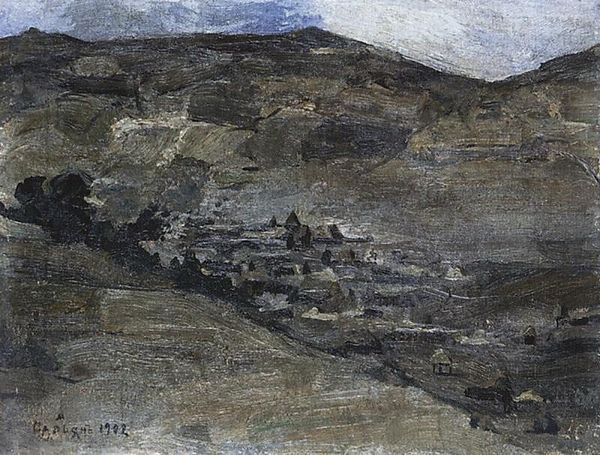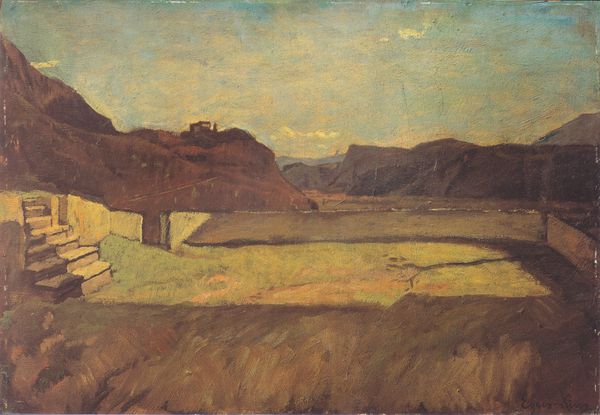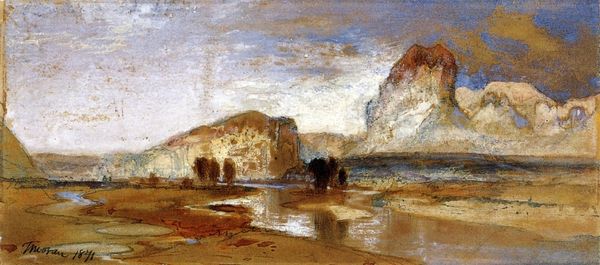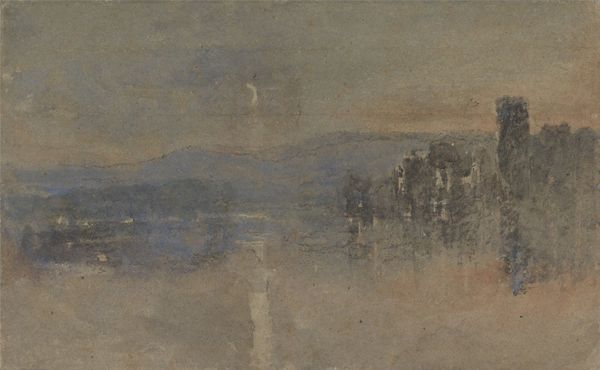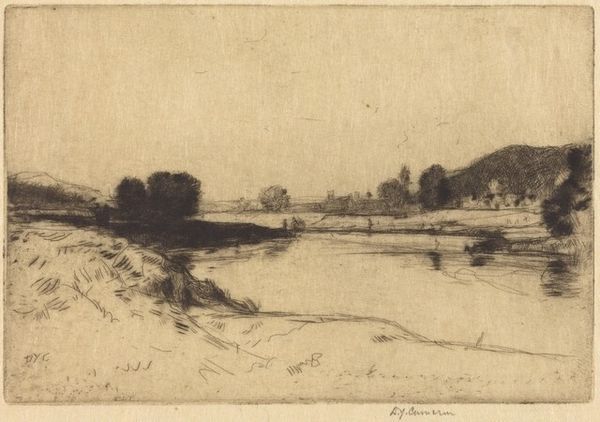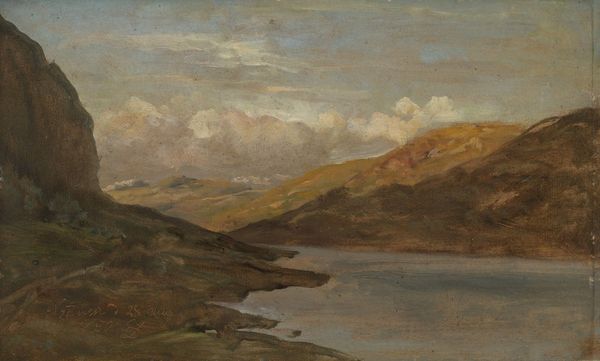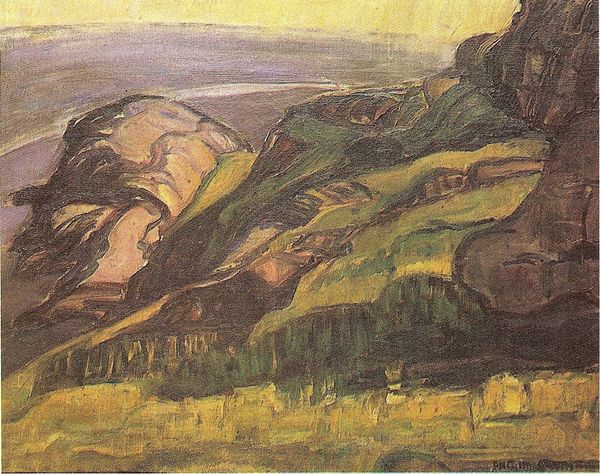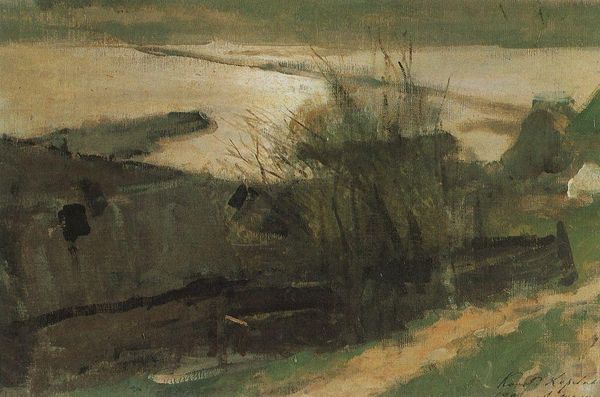
plein-air, oil-paint, impasto
#
plein-air
#
oil-paint
#
landscape
#
oil painting
#
impasto
#
realism
Copyright: Public domain
Editor: Korovin’s "Murmansk Coast," painted in 1894, is really evocative. The texture of the oil paint feels almost gritty, like sand. There's a stillness to it that I find quite moving. What elements of the painting stand out to you the most? Curator: Note how Korovin articulates form and space. Consider the composition; the somber mountain looms, but it is balanced by the lightness of the sand, thereby establishing a formal tension between the two. How might one interpret that visual strategy? Editor: I guess it stops the painting feeling too heavy? But the dark colours still dominate. Curator: Indeed. Focus on the execution. The impasto technique is evident, especially in the foreground, which creates a tactile surface that alludes to the materiality of the landscape itself. The colour palette, reduced to ochre, brown, and near-black, emphasizes mood, a dominant structural principle here. Observe also how that horizon line divides the piece in such an absolute way. Is that horizon calm? Editor: No, the ridge of the hill has all these kinks and steps to it. It's as if there's constant slow movement pressing it. What is that figure in the middle ground of the picture doing? I hadn’t noticed him at first. Curator: Perhaps a detail, an additional articulation. How would you consider his place in the composition, given all we have just analyzed? Editor: It's interesting to notice how the seeming simplicity in "Murmansk Coast" is built upon complex arrangements and tensions. Thank you. Curator: And thank you. Considering its structure has highlighted new aspects for us.
Comments
No comments
Be the first to comment and join the conversation on the ultimate creative platform.
